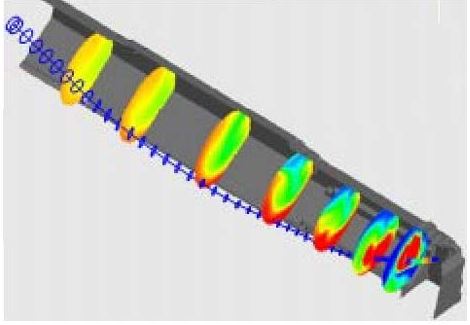Rotary Kilns
REI provides research and consulting services for rotary kiln applications including work for the cement industry. Projects focus on enhancing product yield, improving kiln efficiency, implementing alternate fuels, and controlling emissions. Applications have studied designs to maximize gas-phase mixing for mid-kiln injection, burner operation to optimize heat flux profiles to bed material, the impact of fuel-air ratio and burner designs on kiln performance, and the identification of fuel rich zones to guide installation of corrosion-resistant refractory.
REI also works with the University of Utah to provide two specialized measurement services for kiln clients. The first technique utilizes measurements from a laboratory-scale rotary reactor to characterize hydrocarbon release from cement samples. The second utilizes a rotary kiln simulator to simulate the thermal treatment of soils, the processing of minerals, and the recovery of energy from waste materials.
REI experience with rotary kilns includes:
Waste Co-firing in a Cement Kiln
Tertiary Air Injection Designs for Cement Kilns
Rotary Kiln Design for Improved Ore Processing
Testing for Hydrocarbon Evolution from Cement Kiln Feed
REI has developed Kilnview , a Windows-based, one-dimensional, steady state rotary kiln model with an easy-to-use graphical users interface (GUI) for performing process calculations. Kilnview can be configured for mineral processing and waste incineration applications.
REI has developed Kilnview, a Windows-based, one-dimensional, steady state rotary kiln model with an easy-to-use graphical users interface (GUI) for performing process calculations. Kilnview can be configured for mineral processing and waste incineration applications.
In addition to the applications listed here, REI continues to develop expertise in new areas. If your application is not among those listed, please contact us to discuss appropriate ways we may be able to work together.
Project Summaries
CEMENT KILN
The REI combustion simulation tool BANFF was used to model a coal and waste-fired cement kiln with various tertiary air injection systems to determine the best design for mixing waste combustion products. Studies showed the best designs used high velocity jets emanating from the center of the kiln. This provided the best mixing of the stratified air-combustion product flow during the full kiln rotation. The limiting factor in the design was the pressure drop associated with the jets.
COMBUSTION AND PROCESS SIMULATION IN A ROTARY KILN
Reacting two-phase flow within the firing zone of a rotary kiln used to process raw ore was simulated in order to predict and improve kiln performance. The REI combustion simulation tool GLACIER was used to model the combustion at the burner end of the kiln and to predict the heat flux to the ore bed. The kiln is fired with a combination of coal and gaseous fuel. The ore bed was modeled with a plug flow model. The combustion flow field and the ore bed model were fully coupled. Simulations were performed to predict the impact of fuel-air ratio and burner designs on kiln conditions and performance. Prediction of fuel rich zones near the kiln walls were used to guide installation of corrosion-resistant refractory and resulted in a significant reduction in kiln shut downs.



